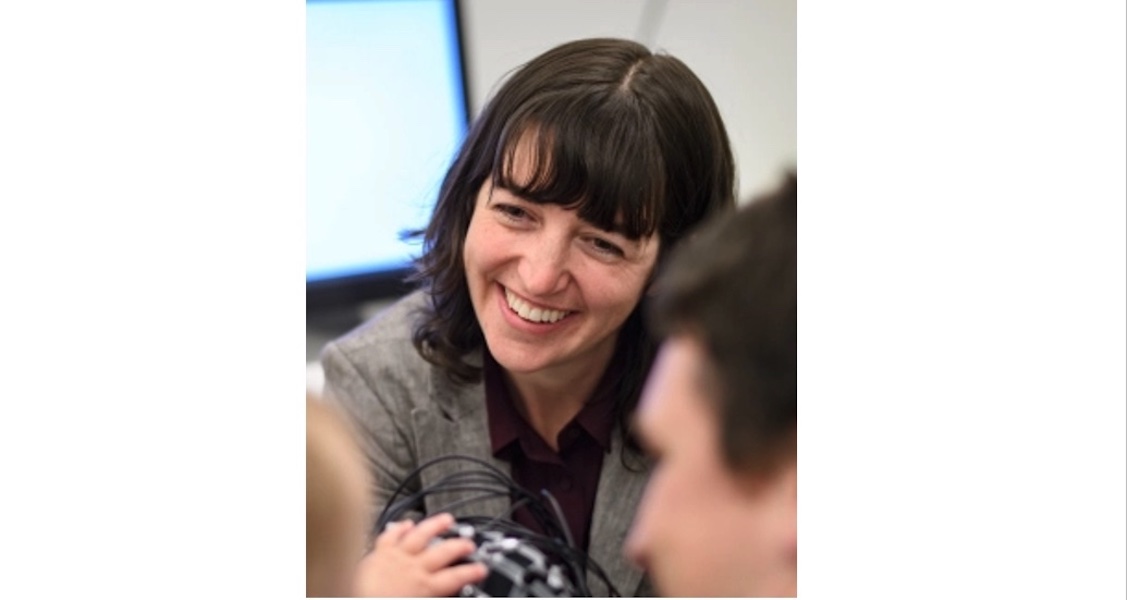Dr. Lauren Emberson is an Assistant Professor in the Department of Psychology at the University of British Columbia. At UBC, Dr. Emberson’s lab is a part of the Early Development Research Group, a consortium of several research centers interested in the development of perception, language, learning, and social understanding in infants and children. Prior to UBC, Dr. Emberson was an Assistant Professor at Princeton University where she co-founded and co-directs the Princeton Baby and Princeton Kid Labs: a developmental group comprising several research labs.
What are your current research interests?
I’m a developmental cognitive neuroscientist who uses a neuroimaging technique called fNIRS (functional near-infrared spectroscopy) to studied how learning and experience shape the infant brain and behaviour. In recent years, I’ve done a fair amount of work just developing the methods that we use to study experience and learning in young infants. Because neuroimaging with infants is hard and even hard if you want them to be awake and engaged, this is a challenge. Alongside that methods development work, I have been doing studies on which brain areas are changing when infants learn new patterns from the environment (e.g., if a new sound goes with a new exciting visual event like a smiley popping up on the screen). We see that the infant frontal lobe (a very high-level region of the brain) is very much involved in that kind of learning even when infants are very young. In addition, we find that information from the frontal lobe is being communicated all around the brain in a very dynamic way when infants are learning. In addition, we just started a study that takes us a step away from “learning” and towards “experience” where we are recording neural responses from young infants when they are exploring toys with their parents. Parents spontaneously produce all sorts of amazing language in this study (e.g., labels, infant-directed speech even singing) and so do the infants, so we are interested in seeing how the experiences that infants are engaging with are modulating their brains and what this can tell us about early development.
How does your work intersect with Language Sciences?
One of the major learning challenges for young infants is to learn their native language. There are many many facets to this but one considers language as a series of patterns or statistical information and we know that infants are very good at learning patterns like the ones that are in language. So my work can intersect with the language sciences by considering how infant learning capacities can be tapped into to support language development. Because fNIRS can allow recordings in very naturalistic settings (e.g., two people talking face-to-face or an infant interacting with their parent) or in populations and settings where it is hard to bring large neuroimaging equipment (e.g., field work), this technique can be highly useful to answer all sorts of questions that researchers have about language “in the wild” or in non-standard research settings. In what I’ve seen the Language Sciences Institute is very excited about studying language in all these kinds of ways and breaking out of the standard laboratory task.
What is a project you've worked on or completed within the past few years that you're particularly proud of?
I did some research with premature infants and how learning is instantiated in their brains and how this can contribute to our understanding of why they are at risk for learning disabilities and language delays. That was a very difficult project to do but also very formative work for me.
What inspires you to pursue your line of research?
Our brains are incredible. In principle every experience that we have changes our brains at least a little bit. And infant’s brains are quite sophisticated as we are learning. I’m inspired to keep doing this work because we have these incredible learning capacities and I believe that will explain a lot about how our minds operate but it is also crucial to know what is happening when this goes wrong or if an infant is at-risk in some way, how can the learning that an infant is able to engage in help explain that and also help point to ways that we can help.
If you had to choose a different career path, what would you be interested in pursuing?
Great question. I often still joke about what I would like to be “when I grow up.” I originally came to undergraduate thinking that I would teach high school biology but now I think I would probably pursue writing. Either non-fiction (translating scientific findings to the more general public) or fiction (novels) but I do love to write.
